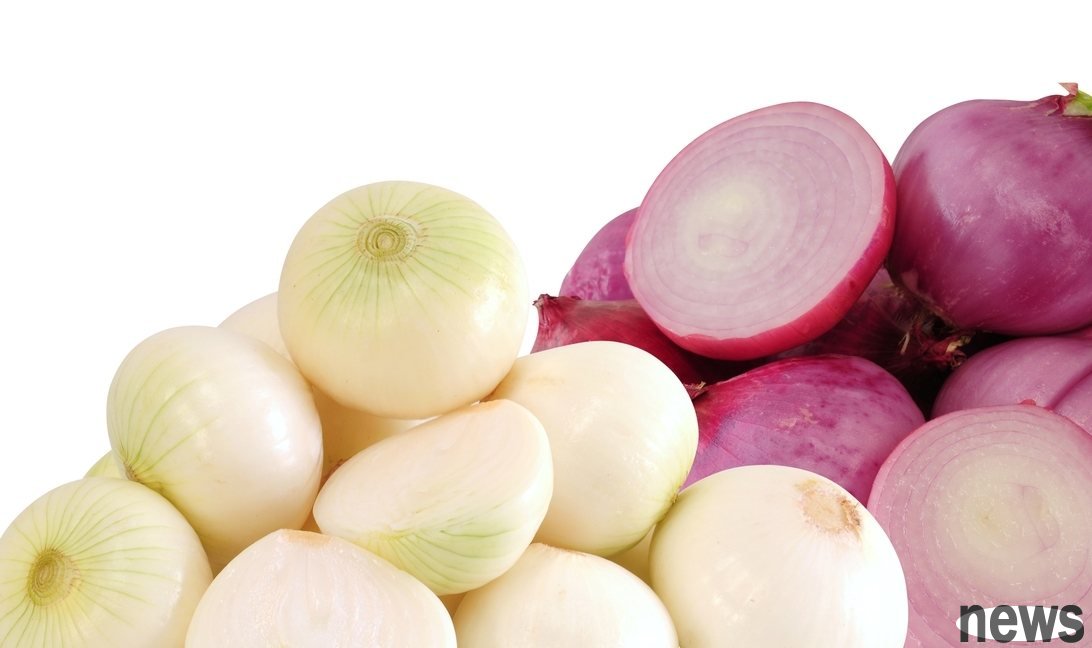
Do you want to make home-cooked meals more flavorful, consume more antioxidant nutrients, and enhance immunity? Onions, an everyday vegetable, are actually a good ingredient that both “enhances flavor” and “maintains health”. But when you walk into the supermarket, red onions and white onions stand side by side. Which one is healthier? How to choose?
When American nutritionists Jamie Baham and Jordan Hill were interviewed by Prevention, they provided professional analysis on the nutritional differences and consumption priorities of red and white onions.
The nutritional content is actually similar. The difference lies in the "color nutrients"Although the appearance and color are different, the basic nutritional composition of red onions and white onions is similar. According to the United States Department of Agriculture (USDA), every 100 grams of red onions contains approximately 44 calories, 1 gram of protein, and 2 grams of dietary fiber; white onions contain approximately 36 calories, 1 gram of protein, and 1 gram of fiber. Both are low in fat, low in sodium and not high in calories.
The real difference lies in the "phytochemicals". Red onions are rich in anthocyanins and quercetin. These antioxidant substances can help fight free radicals, reduce chronic inflammation, and contribute to cardiovascular and immune health.
Red onions: a "purple shield" rich in antioxidantsBaham pointed out that the source of the deep purple color of red onions is anthocyanins, which research shows has the potential to protect the heart and reduce the risk of cancer. According to the journal Frontiers in Nutrition, anthocyanins and quercetin can help inhibit the growth of cancer cells, lower blood pressure, reduce bad cholesterol, and delay bone loss.
In addition, red onions are also rich in potassium and phosphorus, which help maintain heart function and bone health. Baham recommends adding raw red onions to Greek salads or sandwiches to add spice and depth.
White onions: mild and easy to digest, with higher vitamin C content.Nutritionist Hill said that although white onions have slightly lower antioxidant power, they contain more vitamin C, folic acid and fiber, which can promote immunity and cardiovascular function, and also have natural antibacterial effects. White onions also contain phosphorus and zinc, which are good for bones and the immune system, making them ideal for adding flavor to cooking without adding calories.
For people with sensitive gastrointestinal tracts, red onions may be more irritating.If you have irritable bowel syndrome (IBS) or a sensitive gastrointestinal tract, Baham recommends paying attention to the fructans content in red onions. This is a fermentable carbohydrate that may cause gas in the intestines and cause bloating. Relatively speaking, white onions are less likely to cause discomfort and are a gentle choice for those with sensitive stomachs.
Want to lose weight? Both types of onions can helpBaham pointed out that red and white onions are low in calories, fat-free, and sugar-free, and are a good helper to enhance the flavor of dishes when losing weight. Red onions can be eaten raw or pickled, while white onions are suitable for sauteing and stewing. Both can make fat-reducing meals richer and more delicious.
Nutritionists suggest: It is best to eat them alternately.Hill emphasized that red onions have higher antioxidant capacity, while white onions are easier to digest. It is recommended that they be used alternately according to the food mix. For example, red onions are suitable for cold cuts and salads, while white onions can be used as a base for soups, stir-fries or stews. As long as you make good use of the properties of both, you can eat rich nutrients and make your diet more varied.
Eating red and white onions together is the healthiest choice.Regardless of whether you choose red or white, onions are daily vegetables with extremely high nutritional value. Red onions have strong antioxidant power, while white onions are rich in vitamins and minerals. Both can show unique flavors in different dishes. Nutritionists recommend rotating them throughout the week to make colorful onions a healthy highlight on your table.